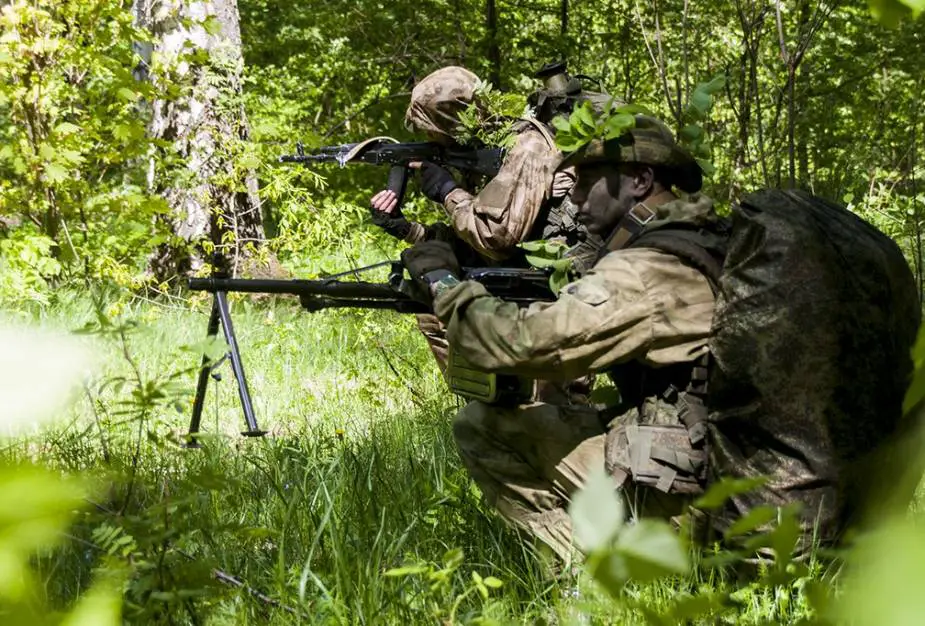Modern wars demand changing army reconnaissance – Part 3
The military activities are changing due to high-tech arms and hardware in the leading world armies. They change the character, structure and contents of the armed struggle. The main vectors of the changes include information technologies and asymmetric actions of the opposing parties. Reconnaissance is a major type of combat provision and has reached a development threshold, Colonel PhD Military Science Ye. Bezsudnov and Lieutenant-Colonel R. Gafarov write in the Voennaya Mysl (Military Thought) journal.
Follow Army Recognition on Google News at this link

It is necessary in all conditions to organize simultaneous observation of the adversary in the whole depth of the responsibility zone of a corresponding formation, beginning from the frontline and to the maximum range of weapons in order to supply close to real-time information to the command. (Picture source: Wikimedia)
The engagement of a reconnaissance and guidance group demands updating the structure of the reconnaissance unit and separating it into two-three sections: command and one-two reconnaissance sections. A detachment will thus be able to provide two-three reconnaissance and guidance groups — GRN-U (command), GRN-1, GRN-2. It is clear that the structure will allow a reconnaissance detachment to operate in a full composition as an independent reconnaissance body and dispatch the above-mentioned GRN if necessary. The command section will move on the organic hardware (APC, IFV, armored vehicles, etc.), while other sections can be complemented with two hardware units and drivers. Such a body of a reconnaissance unit should be called reconnaissance party.
Proper training and arming with the latest reconnaissance means will make the party equal to a reconnaissance detachment, while GRN will be equal to a reconnaissance group or patrol of the traditional format.
Reconnaissance techniques listed in the charter need updating according to the Russian and international experience of the army reconnaissance in modern armed conflicts. Observation remains the main technique of army reconnaissance. A broad observation system is created in positional warfare. It comprises single observers and observation posts deployed along the line of contact in positions occupied by friendly forces.
The combat system of the Russian armed forces and leading world armies calls to simultaneously destroy the adversary to the whole depth of its combat formations, which tactical and operational weapons can reach. However, the observation system and mobile reconnaissance of traditional architecture cannot fully provide timely data about the location of hostile objects, specifically if they are far away from the line of contact.
It is necessary in all conditions to organize simultaneous observation of the adversary in the whole depth of the responsibility zone of a corresponding formation, beginning from the frontline and to the maximum range of weapons in order to supply close to real-time information to the command. Various drones, optical and electronic multichannel systems mounted on masts considerably increase the observation range and can partially resolve the problem.
However, they are insufficient. Timely information collection about the adversary calls to introduce a prospective reconnaissance method — distributed observation. It means reconnaissance by mobile detachments and patrols, which simultaneously expose hostile objects in the reconnaissance area of the formation and monitor them in close to real time.
The reconnaissance detachment should be in charge of organizing distributed observation. One patrol provided by the detachment has to engage in observation and guidance in the area between the platoon deployment line and company columns. The second patrol has to observe the area between battalion deployment and brigade and regiment accumulations.
The distributed observation conducted in the interests of advancing tactical forces up to a battalion should provide guarding units on the march: combat reconnaissance patrol, front, flank and rear guard detachments.
The introduction and development of the suggested reconnaissance method can produce a real basis for the change of the military-scientific paradigm. The result should be achieved not by overwhelming forces in a direction, but by distributed observation, which develops the combat potential of long-range weapons to a critical level for the adversary.
It means success can be obtained not only by motorized rifles and tanks, but by long-range strikes in the framework of a new reconnaissance and fire joint engagement form — reconnaissance-combat actions. In such conditions, general army units will develop the result achieved by destruction means and reconnaissance units.
© Copyright 2021 TASS / Army Recognition Group SPRL . All rights reserved. This material may not be published, broadcast, rewritten or redistributed.


























